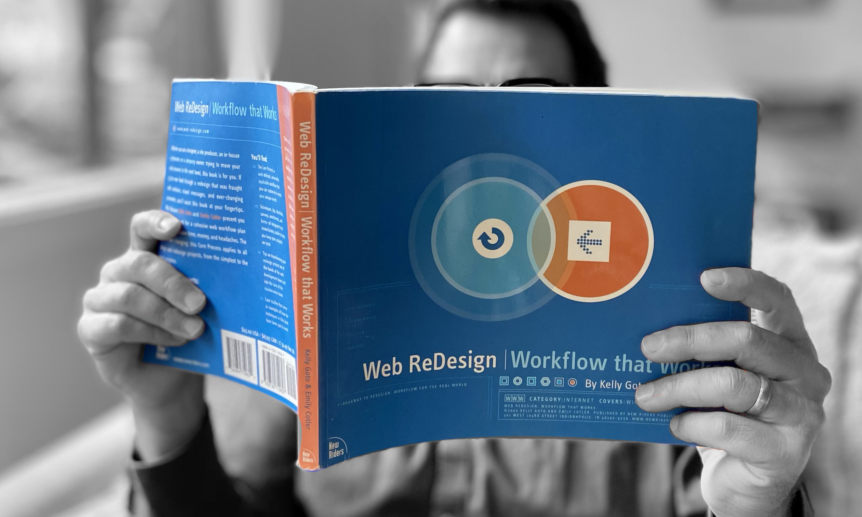Three Key Lessons I Learned On How To Be Awesome In Tech
I’m now what some would call a veteran in software product management. I’ve held many titles from coach and professor to advisor and product strategist. Throughout my career, one book stands out of the many technical publications I’ve read, as one of the most important and influential: Kelly Goto’s, Web Redesign: Workflow that Works. In 2001, as a young web project manager just starting out, the book was a revelation to me. This book was filled with clear thinking, and an abundance of advice, with accessible and immediately usable checklists that unpacked the seeming magic of successful web projects into a rational (and repeatable) process.
During COVID-imposed containment, I recently caught up with Kelly over a WhatsApp call. She remembered how much I loved the book, and asked me why it was so impactful. I remember one of the most surprising things about Web Redesign is how it so openly shared what felt like precious secrets. These were clearly hard-earned lessons learned through the crucible of experience.
Although it’s been twenty years since I first picked it up, it still sits on my bookshelf and for at least a decade, I flip through it regularly. I continue to use the principles outlined in the book in some way or another, almost every day, and certainly in every project I touch. Here are some key takeaways that were valuable then, and continue to resonate today.
Openness & Inclusiveness
Web Redesign modeled the belief that “this is something anyone can do, if you are ready to do the work.” The book was written with an openness—as an invitation. At the time, web design was seen as very technical—looking back, the material feels quaint as it was published in the time of font tags and tables for layout—but Web Redesign presented a breadth of perspective about what the Internet was, how the web fit into that picture, and how the technical and the communication aspects of a website needed to fit together for a site to be successful. This book didn’t make assumptions about the reader’s technical skill or judge a person for being new to the web. It isn’t O’Reilly’s TCP/IP book, written for technical experts—although I learned a lot from that one too!—Web Redesign is a book for everyone.
Project Management as a Technical Skill
Web Redesign gave weight to project management as a technical skill. Systematizing the management of a web project opened my eyes to an entirely new way of thinking about this type of work. The work is technical but so is the organization of the work. One of the most important books in my leadership development is Atul Gawande’s Checklist Manifesto, because of its persuasive and inspiring stories of what happens when you have a strong working agreement that all team members can call on for the best outcome. I don’t think I would have been as attuned to Gawande’s message if I hadn’t first read Web Redesign and been inspired by the checklists presented in its pages, as it provides a bridge from the non-tech to the tech manager.
The Project Isn’t Over When The Coding Is Done
Another principle I learned from Web Redesign is successful projects aren’t one-hit wonders. They must be sustainable and resilient. The book espoused the idea that websites aren’t ever really done and the next iteration should be part of your thinking today and tomorrow. Web Redesign was so early in understanding this lifecycle of websites, perhaps best framed as following the 80-20 rule of the Pareto Principle—80% of the total cost of a website will be support and maintenance, while only 20% developing and shipping the website.
Web Redesign was a blueprint for how we could “Build The Right Thing” and “Build The Thing Right” and do it in a way we could share with our customers and include them in the process. This book presents the benefits of following a process as well as the consequences of deviating from that path. Taking on technical and project debt is attractive when the pressure of a due date is high—cheap shortcut decisions today will have rising costs over time—but it is key to live our values (as design and user advocates) and be kind to future you. The best way to keep the cost of debt down is to not create it in the first place and this blueprint provides the framework for discussing these tradeoffs with our customers.
Understanding how to infuse technical knowledge with human skills for success was so important to me and my career. This book modeled how to share and be free with this kind of knowledge and learning so we can all contribute to the advancement of a field and to pay forward what we have been so fortunate to receive. Finally, the fact that Web Redesign was written by two women, including a woman of color, was massive for me. Almost any other tech book at the time was written by a white dude. While we continue on our journey of equity in representation in the Tech industry, we have seen progress over the last 20 years, and pioneers like Kelly Goto and her co-author Emily Cotler give us shoulders to stand on to achieve new heights but, more importantly, to see further toward the horizon to a brighter and more inclusive future.

